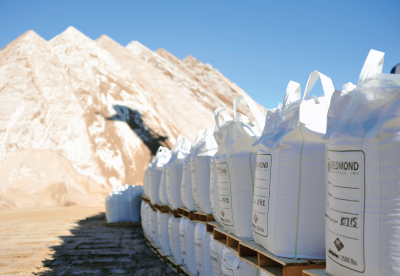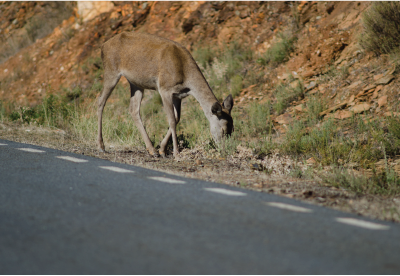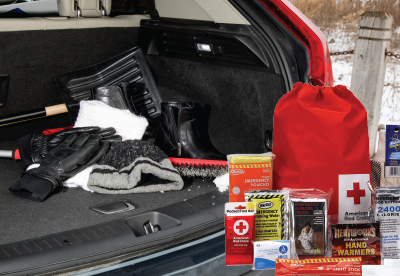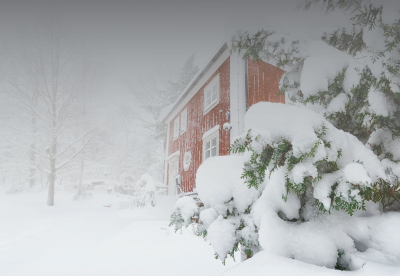Date January 26, 2021 | Brooke Loeffler
Micro-climates
What Are Micro-climates?
Micro-climates small areas whose climate conditions differ from their surroundings.
These pockets form due to a wide range of complex conditions both in the atmosphere as well as on the Earth’s surface.Macro vs. Micro
When we sit down to watch a national weather broadcast, we see large macro-climate conditions. Meteorologists show us sweeping areas of high and low pressure, as well as cold and warm fronts. These macro forecasts will give residents a general idea of conditions in their area.
If you zoomed in to a specific city, local weather forecasters could then tell you how conditions will vary across the area according to their different micro-climates. For example, my hometown of San Diego, California would provide separate forecasts for the beaches, inland areas, mountains, and the deserts.
And if you zoomed in even farther, you would see many other levels of micro-climate conditions that can vary from neighborhood to neighborhood, yard to yard, and even on opposite sides of a building in some cases.
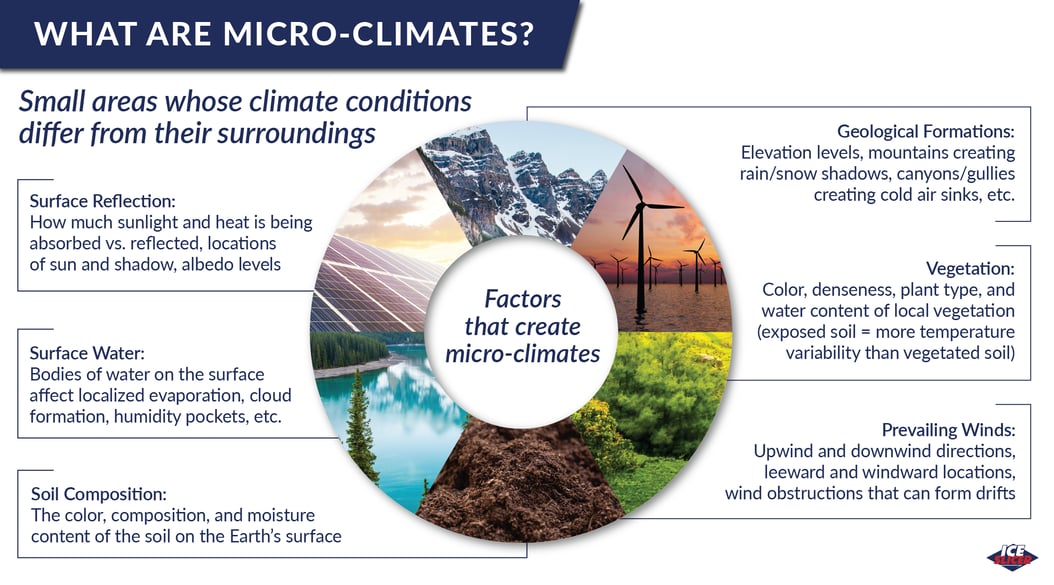
Micro-climate Factors
Macro-climate factors such as cold/warm fronts and areas of high/low pressure can affect an entire region as a whole. However, their force and strength will be felt differently within an area depending upon a range of surface conditions. Surface factors that create micro-climates include:
- Surface Water: Bodies of water on the surface affect local evaporation, cloud formation, pockets of humidity, etc.
- Surface Reflection: How much sunlight and heat are being absorbed vs. reflected by the earth’s surface, locations of sun and shadow, albedo levels (darker colors absorb light and heat, lighter colors reflect light and heat)
- Soil Composition: The color, composition, and moisture content of the soil
- Vegetation: Color, denseness, plant type, and water content of local vegetation (exposed soil creates greater temperature variability than vegetated soil).
Ex. Forest canopies often experience different climate conditions than the forest floor below - Prevailing Winds: Upwind and downwind directions, leeward and windward locations, wind obstructions that can cause the formation of drifts
- Geological Formations: Elevation levels, mountains creating rain/snow shadows, canyons/gullies creating cold air sinks, etc.
All of these factors can combine together to create small or significant climate variations within an area.
Urban Micro-climates
Mother Nature is not the only one who can create micro-climate conditions. Within an urban center, climate conditions can vary throughout a city. Scientists use the term “urban heat island” to describe areas with a lot of exposed metal, brick, and concrete that will act as heat sinks. These heat islands can experience temperatures several degrees higher than areas with large parks and gardens. City parks that mimic nature with vegetation and bodies of surface water can produce a stabilizing and cooling effect on the structures around it.
Micro-climates And Winter Road Management
Complex weather patterns and micro-climates can make it especially difficult to keep winter roads clear of ice and snow. Whether your responsibility covers snow removal for a small or large area, local micro-climate knowledge can save you both time and snow-fighting resources. Roads that pass through certain micro-climates may need pre-storm road treatments, additional snow plow passes, and extra attention.
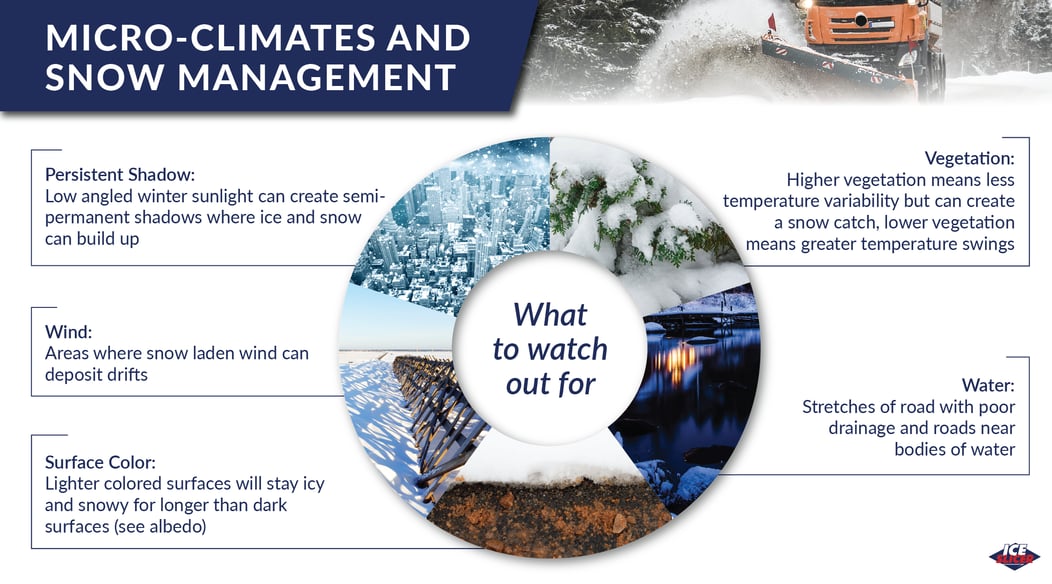 Things To Watch For
Things To Watch For
- Persistent Shadow: The low angle sunlight of winter can create permanent shadows where ice and snow can build up, look for large obstructions (natural and manmade that fall over roadways)
- Surface Color: Lighter colored surfaces will stay icy and snowy for longer than dark surfaces
- Wind: Areas where snow laden wind can deposit snow drifts
- Water: Stretches of road with poor drainage, roads near bodies of water
- Vegetation: Higher vegetation means less temperature variability but can create a snow catch, lower vegetation means greater temperature swings
Ice Slicer: Your Snow Management Partner
No matter what tricks micro-climates throw your way, you can count on Ice Slicer’s natural high performance. With a balanced mix of chlorides, Ice Slicer outperforms white salt at a wide range of temperatures to more quickly restores safe driving conditions. We are proud to partner with snow-fighting crews across the country. Click to learn more about how Ice Slicer improves driver safety throughout a wide range of climate conditions nationwide.
© 2024 Redmond Minerals Inc.


